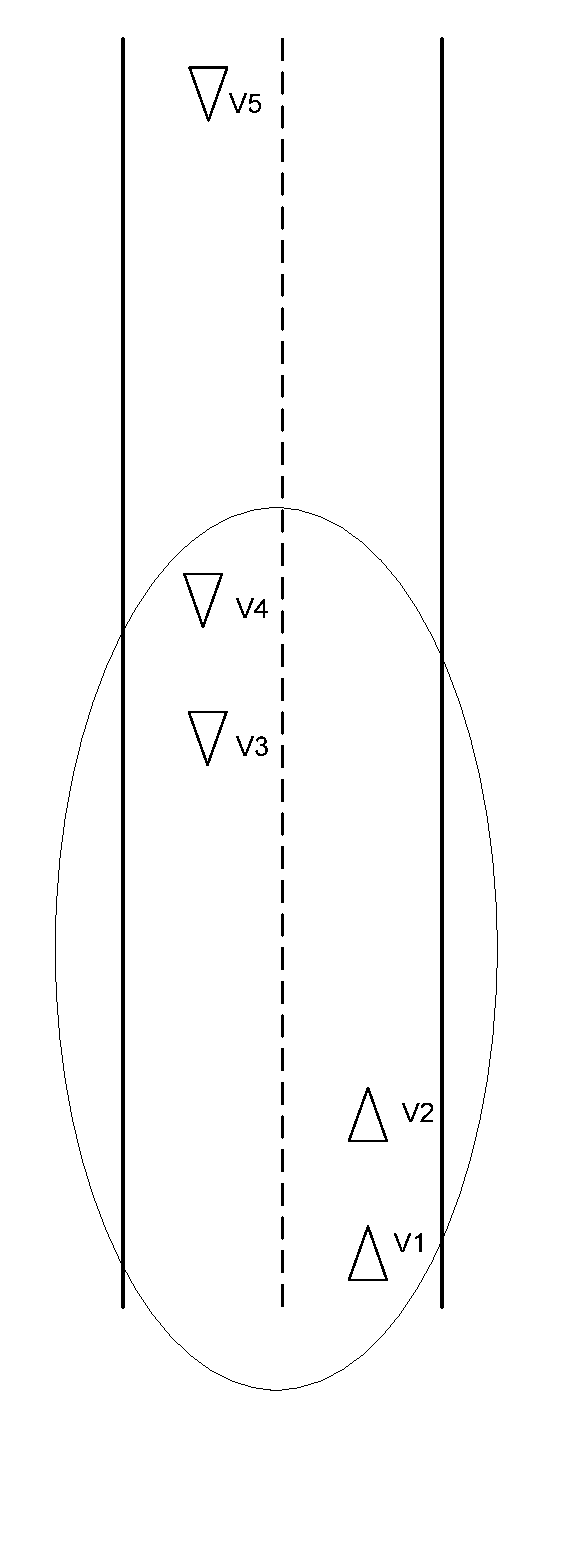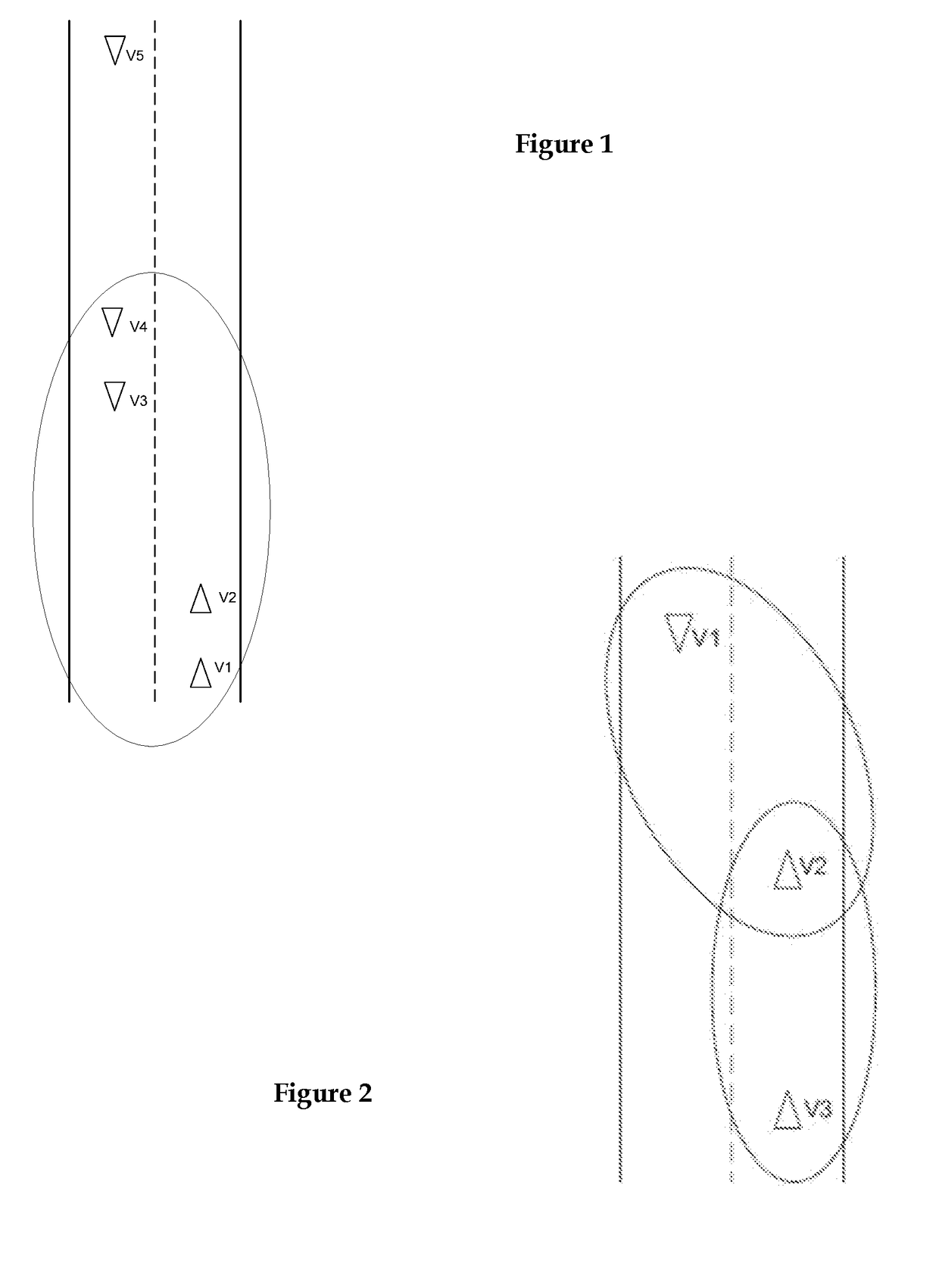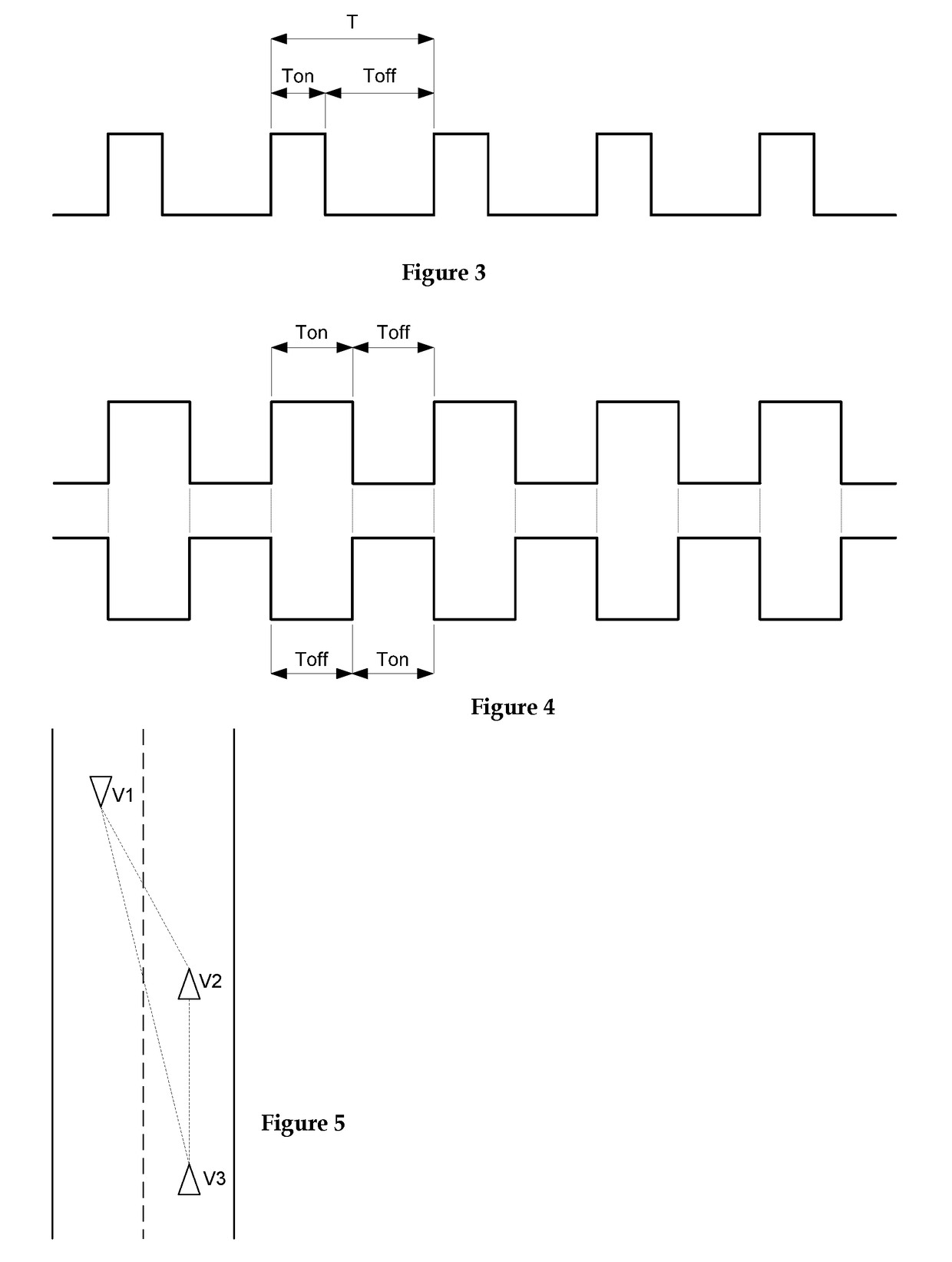Apparatus, System and Method to avoid the night-time of a driver
a technology of a driver and an apparatus, applied in the field of optoelectronic devices, can solve the problems of increasing the risk of accidents, increasing the stress of drivers driving vehicles on roads, and the problem of vision glare or dazzling has yet to be completely solved
- Summary
- Abstract
- Description
- Claims
- Application Information
AI Technical Summary
Benefits of technology
Problems solved by technology
Method used
Image
Examples
case 1
[0487]Case 1: This is a non-synchronized NVE that has been formed due to the interaction between vehicles of an NVE synchronized with one or more “isolated” vehicles not synchronized with the former. At the decision point 328 vehicles from the synchronized NVE will have the “synchronized light detection” signal active, therefore in said vehicles the “enable shifted emission” signal is activated at step 329 and then a waiting time at the decision point 330. Enabling the shifted emission in step 329 is intended, in this case, for the vehicle to transmit information to the “isolated” vehicles as we shall see below. In “isolated” vehicles, as no synchronized light is detected, the sequence passes from the decision point 328 to step 351 where the “enable shifted emission” signal is deactivated. Then in step 352 the sequence initiates a cycle which will be controlled by the counter XIII in step 354, a cycle which can be interrupted by detecting a light pulse whose positive edge falls on t...
case 2
[0490]Case 2: When in any of the non-synchronized NVE vehicles the “synchronized light detection” signal is active, the sequence in each of said vehicles will go from step 328 to step 351 where the ““Will be disabled. Then, from step 352, the sequence enters a cycle controlled by the counter XIII in step 354, which cycle in this case 2 will only be interrupted when said counter reaches the value corresponding to the time “t13”. This is because in this case 2 there are no vehicles coming from a synchronized NVE that emit their displaced light pulses. When the counter XIII reaches the value corresponding to the time “t13” the sequence passes to the part of the diagram corresponding to the application of the second strategy in order to be able to solve the synchronization of this NVE whose conformation is not enough to establish differences of “hierarchy” in vehicles. The description of that part of the diagram will be done after describing the remaining “cases”.
case 3
[0491]Case 3: This is a non-synchronized NVE that is formed from the confiding union of two synchronized NVEs whose respective vehicles are not synchronized with each other. Said non-synchronized NVE starts when the closest vehicles of both synchronized NVEs begin to interact with each other. Once in these non-synchronized NVE initiating vehicles, the “unsynchronized flashing light” signal is activated in all of them, the sequence including 322, 322A, 323, 323, 324, 325, 326, 327, 328, . . . at decision point 328 said “initiator” vehicles will have the “synchronized light detection” signal active and then the sequence will go to step 329 where each vehicle is enabled to emit pulses of light shifted in phase (pulses that in This case fulfills the function of enabling, if necessary, the protection of vision extended in the first potential successors, predicting that the NVE from which they come may be the one that has to change phases). Then at the decision point 330 the wait time han...
PUM
 Login to View More
Login to View More Abstract
Description
Claims
Application Information
 Login to View More
Login to View More - R&D
- Intellectual Property
- Life Sciences
- Materials
- Tech Scout
- Unparalleled Data Quality
- Higher Quality Content
- 60% Fewer Hallucinations
Browse by: Latest US Patents, China's latest patents, Technical Efficacy Thesaurus, Application Domain, Technology Topic, Popular Technical Reports.
© 2025 PatSnap. All rights reserved.Legal|Privacy policy|Modern Slavery Act Transparency Statement|Sitemap|About US| Contact US: help@patsnap.com



